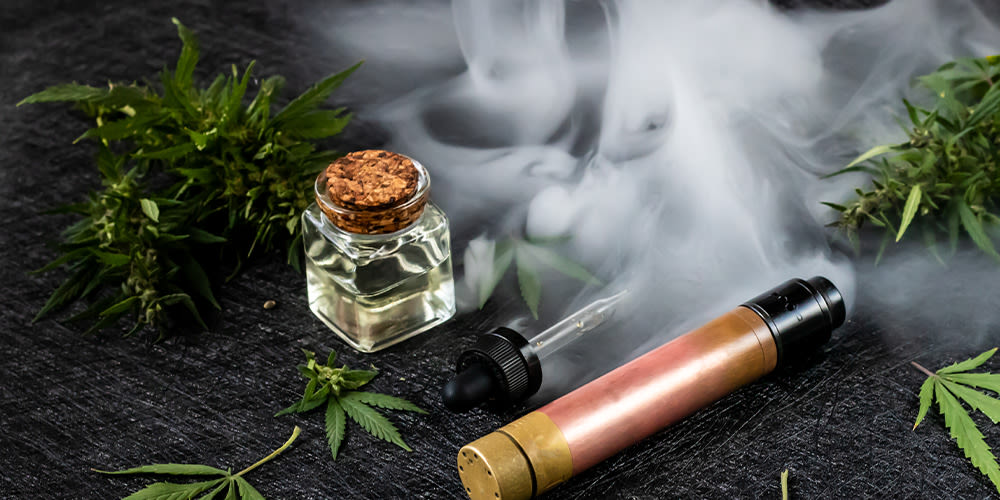From Ingredients to Inhalation: Demystifying the Vape Manufacturing Process
When it comes to vape manufacturing, selecting high-quality ingredients is essential for the creation of a safe and enjoyable product. Companies must source their raw materials from reputable suppliers who have been vetted for safety and quality assurance standards.
During the selection process, attention should be given to detail; manufacturers should pay close attention to all necessary certifications and documents that guarantee the purity of an ingredient before utilizing it in production. Additionally, companies may require their suppliers to meet certain criteria such as testing products with a third-party laboratory or providing documentation of any regulatory approvals needed within specific countries.
Manufacturers also need to consider any potential risks associated with specific ingredients such as contamination or allergies when making decisions about which components they select for use in vape products. All ingredients must be properly labeled so consumers know what they are inhaling and can make informed decisions about using these products safely.
Moreover, manufacturers should strive to create recipes made up of natural components whenever possible by avoiding artificial additives or preservatives where feasible. Ultimately, careful consideration during the ingredient selection process will help ensure customers get a top-notch vaping experience every time they take a puff!
Testing and Verifying Ingredient Quality
Testing and verifying the quality of ingredients used in e-liquid production is a critical step in the vape manufacturing process. Companies must ensure that all components, from nicotine to flavoring agents, meet stringent safety requirements before being introduced into their products.
This can involve using third-party testing services to confirm the cleanliness and potency of each ingredient. Additionally, manufacturers may opt for onsite inspections or regular monitoring of suppliers throughout the year to further guarantee ingredient quality.
Manufacturers should also take steps to avoid contamination and dilution during storage by utilizing proper handling techniques such as temperature control or sealing processes. By taking these precautions when testing and verifying ingredients, companies can be confident that they are producing safe and high-quality vape liquids for their consumers.
Blending Ingredients for Consistent Flavor Profiles

Creating consistent flavor profiles is an essential part of the vape manufacturing process. The key to achieving this lies in blending the right ingredients, as they each contribute to a unique flavor profile.
To ensure every batch reaches its full potential, manufacturers must carefully measure and combine different ingredients with precision. Different elements can be added for enhanced aroma or taste, such as aromatic oils or natural extracts like vanilla and mint.
Manufacturers should also be aware that certain combinations may clash, so experimentation is necessary to achieve desired results. Furthermore, when combining flavors it’s important to consider how each ingredient will interact with others over time; some components may take longer than others to fully develop their intended effect on the overall flavor profile.
With careful consideration of all these factors and more, manufacturers can create flavorful products that meet their customer\’s expectations while maintaining consistency from one batch to another.
Packaging and Labeling Requirements for Vape Products
When it comes to packaging and labeling vape products, manufacturers must adhere to specific regulations. These include specifying the ingredients used in their product, displaying nicotine concentration, and including warnings about potential health risks.
Manufacturers must also ensure that their labels are clear and easy for the consumer to read—including text size and font type. Additionally, they should consider using tamper-evident seals or other security measures for additional product safety.
Furthermore, there may be certain state or local laws requiring a special label on the package indicating that it contains nicotine or other hazardous materials which need to be taken into account when designing labels for vape products. By following these guidelines, manufacturers can rest assured knowing that their product is safely labeled with all necessary information by current regulations.
Inhalation Mechanics of a Vaporizer Device

The inhalation mechanics of a vaporizer device are critical to the vape manufacturing process and understanding how they work is key in creating a quality product. Vaporizers contain several components that must be precisely tuned for them to function properly.
The air drawn into the device is heated, causing the active ingredients contained within it to evaporate and create an aerosol that can then be inhaled. As part of this process, devices have adjustable temperature settings allowing users to control what kind of inhalation experience they receive from their device.
Additionally, some models also feature variable wattage or voltage output capabilities allowing further customization of their vaping experience. With all these intricate parts working in harmony, vaporizer devices can produce an efficient and consistent delivery system for users’ desired substances without any combustion or smoke being released into the environment while still providing unique sensory experiences with flavorings and other additives.
Conclusion
Vape Manufacturing is a complex process that requires sophisticated knowledge and skill. From the selection of ingredients to the inhalation of vapor, each step must be carefully considered to ensure quality products and keep customers satisfied.
By demystifying this process, it can help vape manufacturer better understand what goes into their products and how they can improve upon them for increased customer satisfaction. With a greater understanding of the Vape, Manufacturing Process comes improved production efficiency, resulting in high-quality products that are sure to delight consumers.
